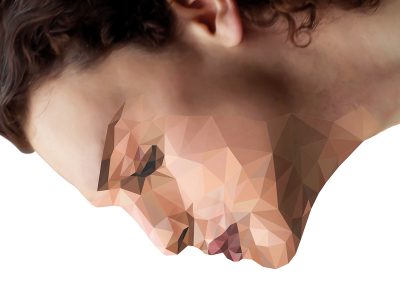Thomas Demand
PATIO, 2014
C-Print, Diasec
193 x 130 cm
Courtesy Sprüth Magers
Thomas Demand (*1964) presents the work “Patio” in the Frankfurter Kunstverein. Today, photography is free of the assumption that it undoubtedly depicts an instance of the real world. In a turn by now distinctive of Demand’s practice, photography instead presents a reconstructed reality. The starting point is no longer a direct image of reality or an excerpt thereof, but rather places and things that have already been depicted by the media. Demand draws his motifs from mass media, the press, and the Internet. He then creates scale reconstructions of them, using paper and cardboard in his studio. The motif thus becomes a backdrop, and the backdrop a motif: an almost tautological circle in thought where the image makes its own claim on reality.
“Patio” reproduces details from the backyard of the house that served as the hideout for one of the most wanted men in America: James “Whitey” Bulger. Bulger lived undetected for more than sixteen years in a humble apartment in Santa Monica until he was captured there in 2011 after several warrants had been issued for his arrest. The events even made their way into the German television program “Aktenzeichen XY… ungelöst”. The ubiquitous practice of amateur tourist videos was ultimately what led to Bulger’s detection. Since 1991 he had been on the FBI’s most-wanted list for his involvement in 19 murders, blackmail, unauthorized possession of firearms, bank robbery, criminal conspiracy, and money laundering. Bulger became a public figure, eventually inspiring the novel “Brutal”, which Martin Scorsese would base his film “Departed” on. Several other film and television productions would also be based on the criminal’s biography, including “Brotherhood”, “Black Mass”, and an episode devoted to him on “Gangsters: America’s Most Evil”. The entanglement of a real subject and their mediatized public image become almost tangible here.
Demand’s work portrays the conspicuous inconspicuousness of this place: the invisibility of a man who managed to remain hidden in a big city and subsequently adjusted his life to become as unspectacular as possible. This image shirks all expectations of spectacle and depictions of the violence that Bulger and his arrest were linked to. In his work, Demand augments the original mediatized image, inverting the relationship between signifier and signified, word and image as well as the question of the veracity of representation. The motifs Demand chooses often conceal the aftermath of destruction, either human or natural, within them. He seeks out fragments, artificially reconstructs them and empties them of any narrative or human presence. The reconstructions, however, maintain important references to reality: both the one-to-one scale of the set and the dimensions of the photographic space. The viewer’s body thus enters into a physical relationship with the work. Demand‘s works are deceptive, and their ‘photorealistic’ manner of representation gives the viewer a false sense of reality. His motifs are distanced from reality through several stages of transformation. The viewer’s perception is cheated, and they are left to cognitively rediscover and compose what’s really real. His image doesn’t tell a story. It remains open, producing a space of imagination, interpretation, and poetry.
Thomas Demand lives and works in Berlin (DE) and Los Angeles (US). He received international credits for his numerous group and solo exhibitions and is one of the most well-known photo artists in Germany. He studied at the Academy of Fine Arts in Munich (DE) and later attended the sculpture class at the Art Academy Düsseldorf (DE) and graduated at Goldsmiths College in London (UK). Since 2011, Demand is Professor for Sculpture with emphasis in Photography at University of Fine Arts of Hamburg (DE).

